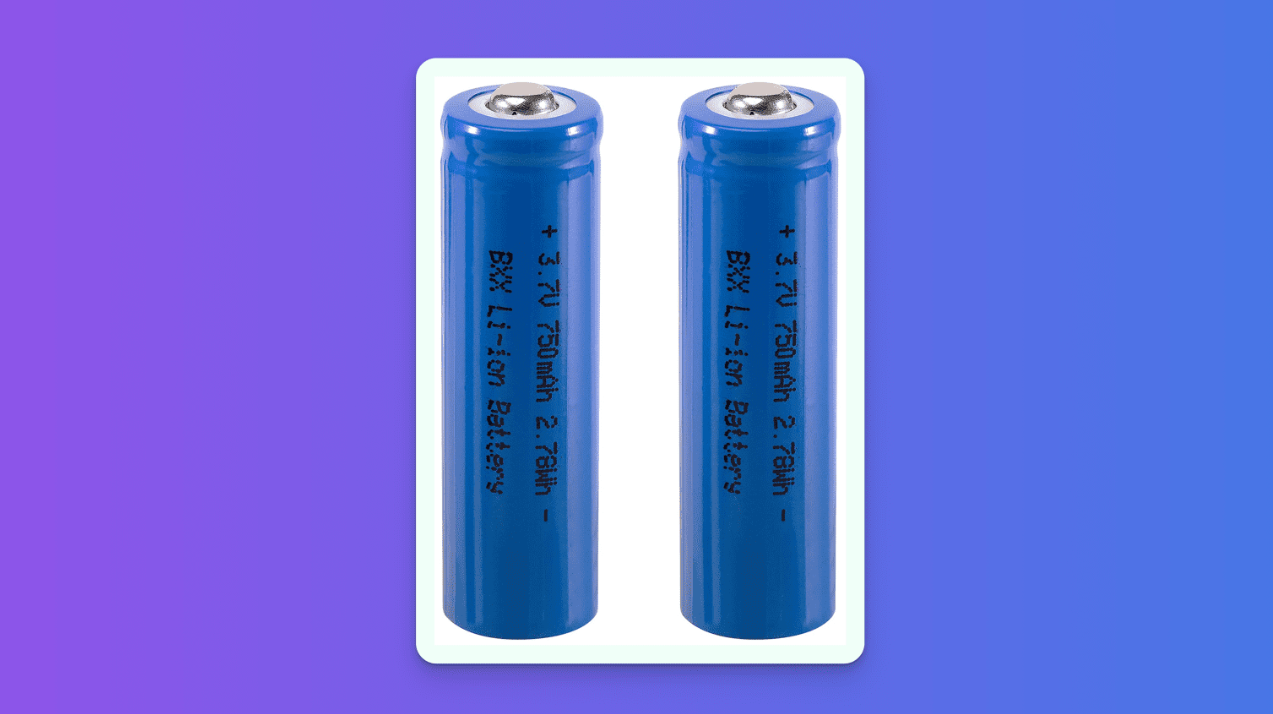In the world of portable electronic devices, batteries play a pivotal role in determining the overall performance and longevity of these gadgets. With the continuous advancements in technology, batteries come in various shapes and sizes, each designed to meet specific requirements. Two common battery form factors that have gained significant attention are the 18650 and 14500 sizes. These numbers might seem arbitrary, but they actually refer to standardized dimensions that can have a profound impact on battery performance. In this article, we’ll delve into the differences between these two form factors and explore how they can affect the performance of your devices.
Understanding the Basics: 18650 vs. 14500
Before diving into the performance aspects, let’s take a moment to understand the basics of the 18650 and 14500 batteries.
18650 Battery: The 18650 vs 14500 Batteries, named after its dimensions (18mm diameter and 65mm length), has become one of the most widely used rechargeable battery sizes. It’s commonly found in laptops, power tools, electric vehicles, and various other high-demand applications. Due to its larger size, it boasts a higher capacity and discharge rate compared to smaller batteries.
14500 Battery: The 14500 battery, following the same naming convention, features a diameter of 14mm and a length of 50mm. It is a common size for rechargeable lithium-ion batteries used in smaller devices like flashlights, remote controls, and certain small electronics. While it offers advantages in terms of compactness and weight, its capacity and discharge capabilities are generally lower compared to the 18650.
Capacity: The Energy Reservoir
Capacity, often measured in milliampere-hours (mAh), is a critical factor in battery performance. It determines how long a battery can sustain a device’s operation before needing a recharge. Larger batteries like the 18650 tend to have higher capacities due to their larger physical size, which allows for more electrode material. This translates to longer usage times between charges.
For example, an average 18650 battery might have a capacity of around 3000-3500mAh, while a typical 14500 battery might offer around 600-1000mAh. This significant difference in capacity means that devices powered by 18650 batteries can operate for much longer periods without needing a recharge compared to those using 14500 batteries.
Discharge Rate: Power on Demand
The discharge rate, often measured in continuous current output (Amps), determines how much power a battery can deliver at any given moment. This becomes particularly important for devices that require bursts of energy or have high power demands.
18650 batteries, with their larger size and greater electrode surface area, generally offer higher discharge rates compared to 14500 batteries. This means that devices using 18650 batteries can handle higher power requirements without a significant drop in voltage. For applications such as power tools or high-performance flashlights, the 18650 form factor is more suitable due to its ability to deliver the necessary power without overheating or experiencing a rapid voltage drop.
Size and Portability: The Trade-Off
While larger batteries have the advantage in terms of capacity and discharge rate, smaller batteries like the 14500 shine when it comes to portability and weight. Compact devices often rely on these batteries to maintain a lightweight and easily transportable design.
The choice between the two form factors depends on the priorities of the device. If portability and lightweight design are essential, the 14500 battery is a natural choice. However, it’s important to note that this choice might come at the cost of shorter usage times and potentially lower performance in high-demand scenarios.
Heat Dissipation and Longevity
Heat dissipation is a critical aspect of battery performance and lifespan. Batteries that generate excess heat during discharge are more prone to wear and degradation over time. The larger size of the 18650 battery allows for better heat distribution and dissipation, which can lead to a longer overall lifespan.
On the other hand, the smaller size of the 14500 battery may lead to less effective heat dissipation, potentially impacting the battery’s longevity. In devices that demand consistent and sustained power output, the 18650 battery’s superior heat dissipation can provide a more stable and reliable performance over extended periods.
The Verdict: Choosing the Right Battery
In the battle of 18650 vs. 14500, there is no clear winner. The choice between these two form factors ultimately depends on the specific needs of your device and its intended use. Here’s a quick summary to help you make an informed decision:
- 18650 Battery:
- Higher capacity and discharge rate
- Longer usage times between charges
- Better heat dissipation and potential for longer lifespan
- Suited for high-power devices, power tools, laptops, and electric vehicles
- 14500 Battery:
- Compact and lightweight
- Ideal for portable devices, flashlights, and remote controls
- Lower capacity and discharge rate
- May experience quicker voltage drops under high demand
When choosing a battery, it’s important to consider the device’s power requirements, desired usage times, and the balance between performance and portability. Both battery types have their own strengths and weaknesses, making them suitable for different scenarios.
Conclusion
As technology continues to advance, batteries are becoming increasingly diverse to meet the demands of various electronic devices. The 18650 and 14500 battery form factors offer distinct advantages and trade-offs, with size playing a pivotal role in determining their performance characteristics.
When making a decision between the two, it’s essential to evaluate the needs of your device and consider factors such as capacity, discharge rate, portability, heat dissipation, and longevity. Whether you prioritize extended usage times, high-power performance, or compact design, understanding the impact of battery form factors can help you make an informed choice that aligns with your device’s requirements.

